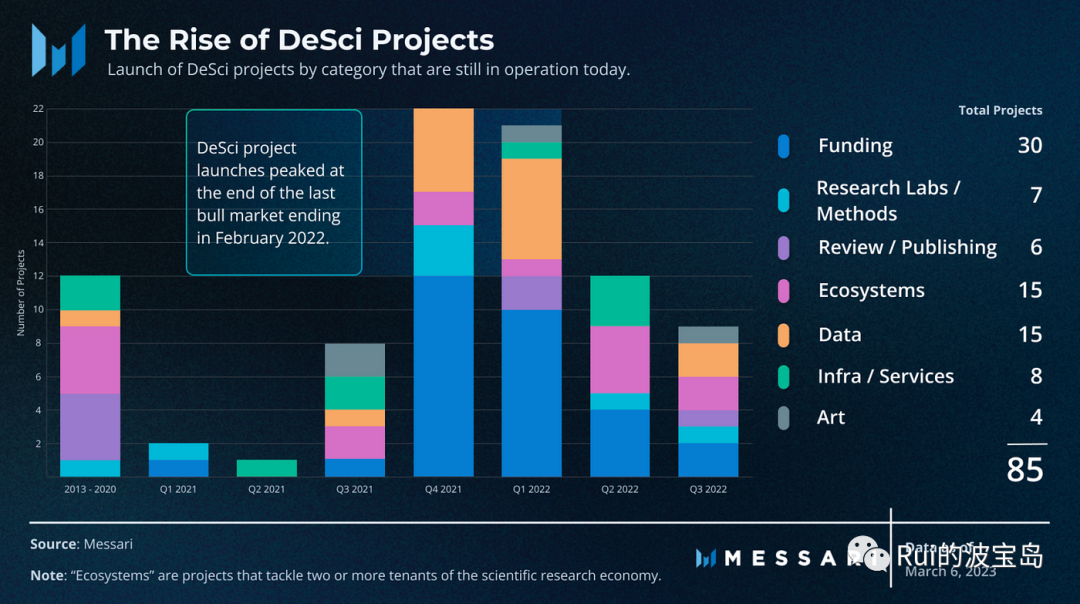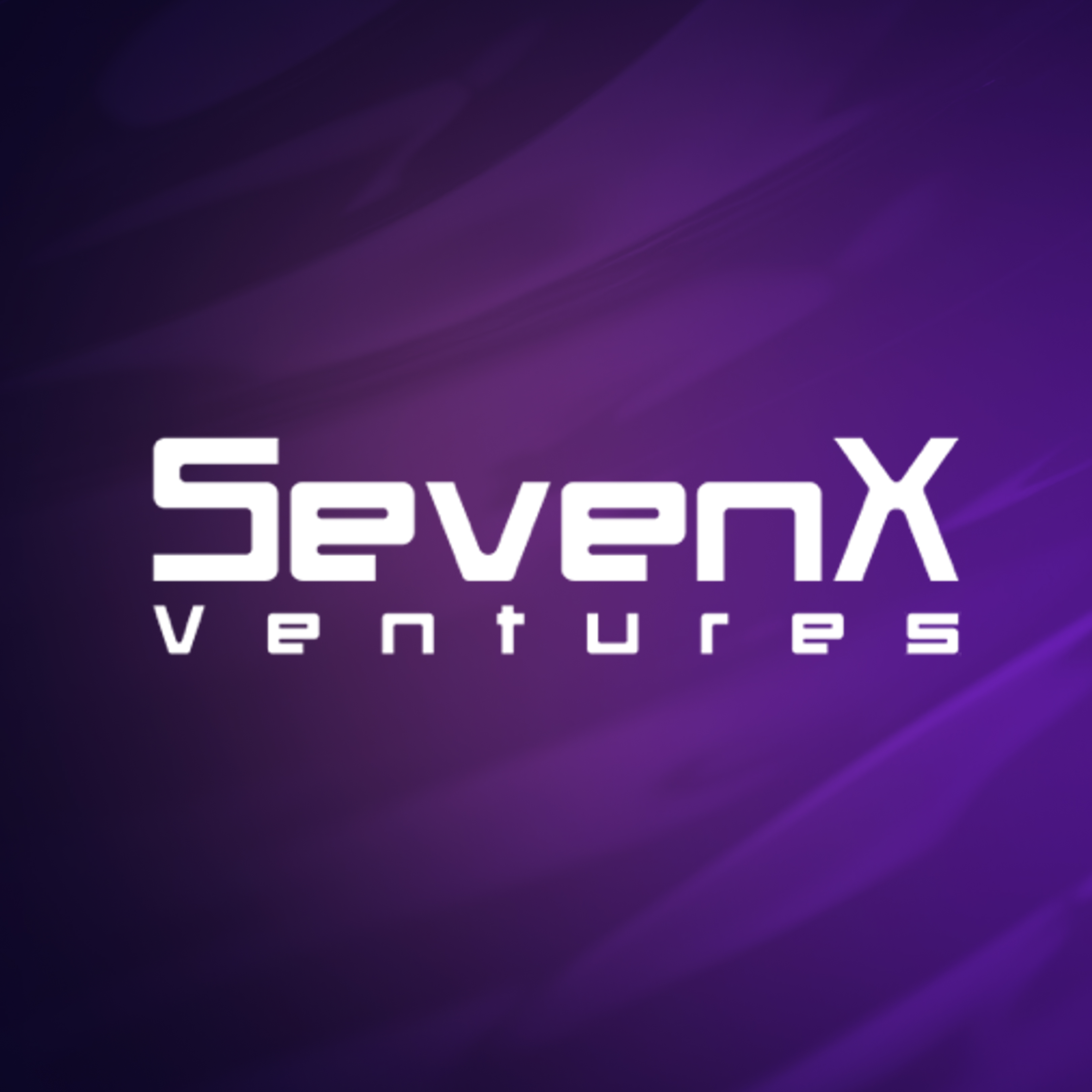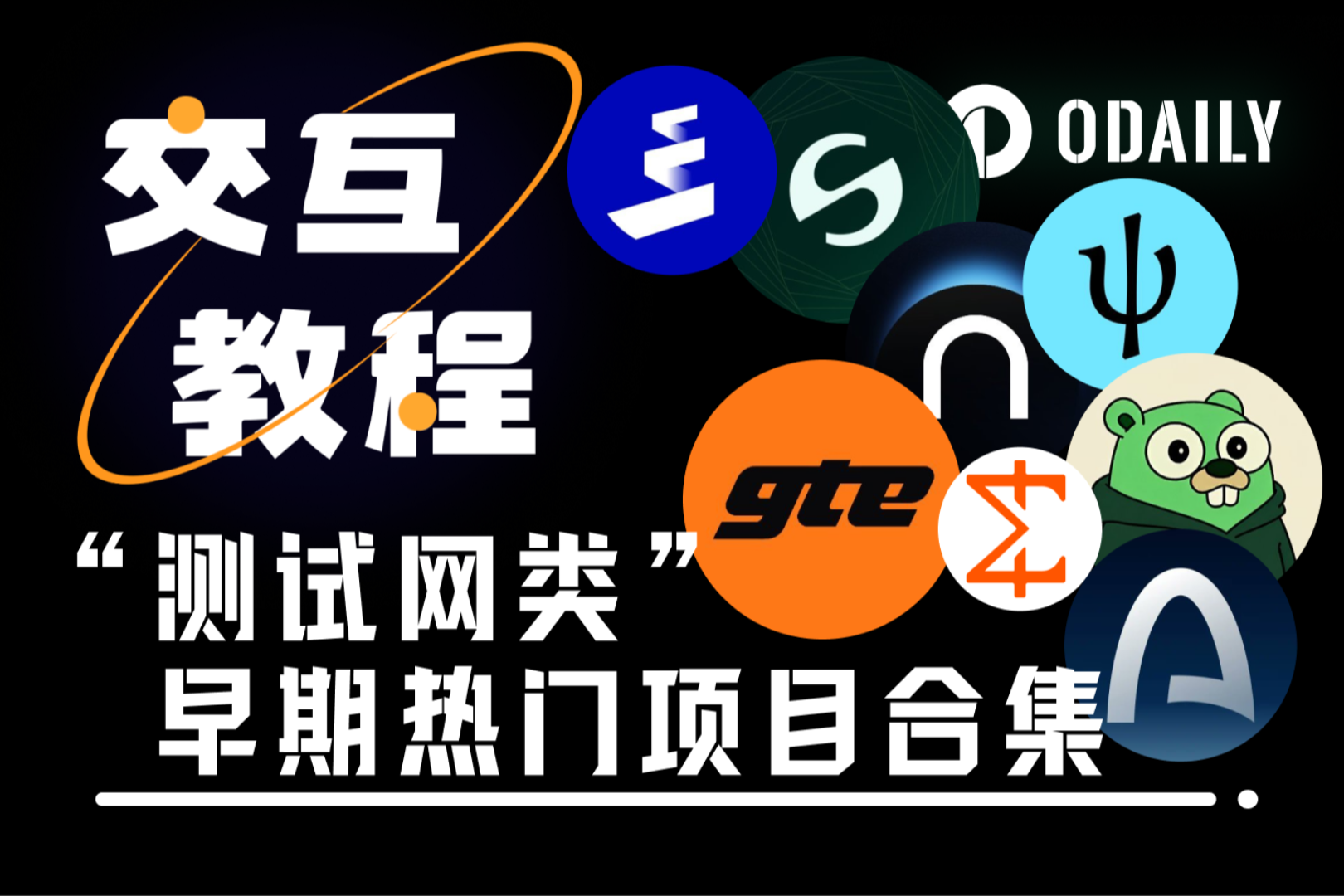DeSci: How blockchain can disrupt the scientific landscape
Original author: Rui, SevenX Ventures
This article is for communication and learning purposes only and does not constitute any investment advice.

I co-launched the DeSci NYC community at the end of 2022, which holds regular meetups in New York, covering topics ranging from AI-driven mushroom science, bee neural research to blockchain technology. I gradually realized that decentralized science (DeSci) is a new concept for people in any field. This article will cover what I understand about the DeSci architecture, the core international DeSci projects, and future development trends.
Article structure:
💣 Challenges faced by traditional scientific research
🔮 An Urgent Call for Decentralized Science (DeSci)
⛓️ Infrastructure: Ethereum, L2 expansion, storage
⚙️Middleware: IP-NFT, legal, database, ZKP
🛠️Applications: Financing, data market, research tools, publishing, reputation system
🏠 Community: DeSci NYC, DeSci Berlin, DeSci Tokyo, etc.
✨ How do I view future challenges and opportunities?
🐈⬛ Conclusion
Challenges facing traditional scientific research
Scientific research has long been the cornerstone of innovation, driving progress in a wide range of fields. However, traditional research areas have been plagued by many challenges:
Barriers to entry are extremely high: it can be difficult for people outside academic institutions to participate in scientific research.
Low data transparency and reproducibility: Researchers have difficulty building on existing work or validating the results of published studies.
Concentrated funding: The top 10 research funders accounted for 44% of all funding in 2019.
Peer review bias: May be subject to bias, especially from well-known researchers or institutions.
Publication controls: Researchers face high barriers to entry and need to pay high fees (often five-figure dollars) to publish their work in top journals.
As the limitations of the “ivory tower” of traditional science become increasingly apparent, the urgency for DeSci solutions increases. DeSci enables scientists to access resources, share data, obtain funding, conduct peer review, and publish research in a transparent and collaborative manner. This groundbreaking alternative to traditional methods is paving the way for a more accessible, decentralized and inclusive scientific community.
I will start my DeSci journey with the following structure:
infrastructure
DeSci projects are typically based on the Ethereum blockchain, allowing people to develop applications, conduct transactions, and utilize storage. To optimize performance and minimize costs, scaling solutions such as Optimistic Rollups (OP) and zkSync are often leveraged, which process off-chain transactions and regularly submit aggregated results to the Ethereum main chain. In addition, storage protocols such as Arweave provide unstructured data or file storage that is superior to traditional web2 storage in terms of security, reliability, and censorship resistance. Most DeSci projects are built on this powerful infrastructure.
If you don’t know about blockchain infrastructure, please visit the official website of the Ethereum Foundation.
middleware
Database: Structured Data Format
The lack of a low-cost, efficient decentralized storage solution for structured data such as graphs or forms forces developers to rely on centralized solutions, ultimately resulting in single points of failure and unreliable Accessibility and management issues.
DBDAO is an innovative database structure that turns each row of data into an NFT, and contributors can share the profits when the database is monetized. Additionally, DBDAO turns every database into a DAO, allowing administrators to effectively manage access and audit controls. As it develops, we can see interesting potential in using ZK (zero-knowledge) technology to protect data while ensuring buyers realize the value of the database.
Legal Terms: Agreements in Smart Contracts
By incorporating legally binding agreements into NFT smart contracts, parties can safeguard their interests and comply with applicable laws and regulations. For ease of access, this legal agreement should be as understandable as possible to both legal professionals and blockchain engineers.
OpenLaw is building a technology stack to help power smart legal agreements using tagged legal templates. This approach may be beneficial to those who prefer a more traditional contract creation process, but it may not be as customizable.
Ownership: IP-NFT
Establishing and regulating ownership of intellectual property (IP) is critical in science. This can be achieved through NFTs, which are digital assets on the blockchain that will create a dynamic IP market by increasing the liquidity of assets. This allows IP owners to sell or split IP licenses between different entities while ensuring that IP owners receive their fair share of secondary market royalties.
Molecule releases its standard IP-NFT, which is a unique identifier used to verify the ownership and authenticity of IP assets and can be inserted into legal agreements, customized smart contract functions and fragmented ownership. Technically, the metadata is stored on Arweave, while the IP and licenses are stored on Nevermind (a centralized data store), ideally they should use a decentralized data storage layer (but nothing is too mature right now).
Privacy: Zero-knowledge proofs
When we mention the importance of open source, we should also emphasize privacy controls for research, and DeSci should balance promoting transparency and collaboration with guaranteeing data confidentiality.
Zero-knowledge proofs (ZKPs) are here, a cryptographic technology that is essential for decentralized scientific research. They protect privacy, allow researchers to learn from each other without compromising data confidentiality, and help researchers Comply with privacy regulations.
Application layer
Financing
Decentralized financing structured as a DAO has become a revolutionary way for individuals and organizations to directly provide funds to projects they trust. It eliminates the middleman and provides greater transparency, allowing contributors to see how their funds are used and have the right to participate in the decision-making process.
Gitcoin, the most famous web3 funding platform, was founded in 2017 to support and profit from open source projects through bounties. The platform is based on secondary funding, a new mechanism for democratically distributing charitable funds that allows smaller contributors Have greater revenue impact. To date, Gitcoin Grants has raised over $500,000 in funding.
Molecule is a popular DeSci funding platform focused on the biopharmaceutical field, providing a protocol for creating hybrid legal smart contracts original IP-NFT, connecting researchers and funders, and now has 250+ research projects with 6 Bio DAOs. Valley DAO uses a similar approach.
Bio.xyz provides the DeSci DAO with launchpad, resources, guidance, a shared network, and a set of legal and smart contracts. Their goal is to enable DeSci DAO to use IP-NFT to fund, manage and develop intellectual property, thus promoting the Cambrian explosion of digital IP assets. There are currently 6 DAOs in the ecosystem.
There are many interesting niches for DAOs. VitaDAO focuses on longevity research and has established a complete token incentive mechanism.
HairDAO is used for hair loss treatment research; AthenaDAO contributes to womens health; PsyDAO provides small grants for early-stage research on Psychedelics; CryoDAO funds the field of cryopreservation and promotes cutting-edge medical technology; FrontierDAO focuses on space, fusion energy and developing the space metaverse.
data market
Many researchers face challenges due to limited and expensive data resources, mainly due to the tight protection of their data by Web2 companies. It’s a bold idea to imagine the potential of an open data marketplace: individuals being able to monetize their data, while allowing researchers to improve access, foster collaboration, and communicate across platforms.
As we mentioned above, DBDAO is an innovative database structure whose core idea is to enable people to monetize their data. In my opinion, DBDAO is not just a database structure, it is also a major change in the traditional data contribution model, because it can prevent researchers from paying upfront for data before making profits or financing, and it also uses code to ensure data contribution. the expected return of the investor.
The Fleming Protocol is an open source data economy designed to drive collaborative biomedicine by incentivizing patients, with a primary focus on health data ownership. They provide patients with the infrastructure to store their data in IPFS, ensuring they maintain full custody and control. In addition, it enables patient users to monetize their data and directly obtain data monetization benefits, of which a portion of transaction fees will be contributed to the FlemingDAO treasury.
research tool
When conducting research, various formats are often involved, such as reports, charts, code, and external APIs. We need a multifunctional decentralized platform to seamlessly connect the research process and achieve dynamic research release.
DeSci Node is a very interesting application that allows researchers to link tables and figures in manuscripts with data and code and create a dynamic, interoperable version record, thereby enhancing the research process. The beta version was released on February 21, 2023, and nodes are now stored in an open state repository on IPFS. Their future roadmap is to integrate computing for seamless releases, integrating funds with Gitcoin and Hypercerts.
LabDAO is a new research organization that not only allows you to license releases, get funding, but also use research tools. These tools range from Notebooks for small molecule docking, computational infrastructure, and wet lab access.
publishing platform
No more publish or disappear. Traditional scientific publications and their peer review systems rely heavily on a few major industry players who control most journals, databases, and metrics while placing most researchers behind paywalls, which has serious consequences for fairness, quality, cost, and pro bono Labor and transparency are undoubtedly huge challenges.
Co-founded by Coinbase co-founder Brian, The ResearchHub is a platform for researchers to freely share their work, browse personalized feeds, conduct peer reviews, post scientific bounties, use research tools, and earn rewards. They have a native token, RSC, used to incentivize content creation, prompt valuable content, and vote on key decisions for the community.
reputation system
In order to cultivate a high-quality and trustworthy community, the DeSci platform should establish a complete reputation system, just like those of Web2 forums, allowing individuals with real expertise to have greater exposure and voice. However, a significant challenge is the anonymity inherent in blockchain technology, where the wallet address representing a user cannot be directly linked to their true identity.
First, we need to track user interactions on decentralized platforms, such as likes, comments, and posts, to help build credibility and expertise. Second, leverage decentralized publishing tools to connect users to their scientific work and increase transparency and accountability. Additionally, combining off-chain traditional academic identities with on-chain records creates a seamless reputation system that recognizes and verifies users’ credentials and achievements.
DeSci Community
So far, weve seen a vibrant community from around the world trying to pool resources and talent to build the future of DeSci. Salute to communities like DeSci NYC, DeSci Berlin, DeSci Tokyo and more.
How I see future challenges and opportunities
Its great to see that Messari research shows that there are 85 DeSci projects running now, over 50% of which were launched in the past year. However, challenges also arise:

1. Master the token economy and build a sustainable model
Although some platforms have introduced tokens as incentives, their currency price management is very poor. While it may initially attract some users to build a reputation, it may ultimately hinder long-term product engagement and growth. Actions such as refining token usage, re-evaluating the rationale of token design, building brand consensus, and developing strategic relationships are critical. Token economics can be a double-edged sword; in order to realize the promised free market future, a platform or DAO must master the token game.
2. Establish new rules for the DeSci era
We have to admit that the traditional scientific system maintains a high quality of research through centralized control. As we work to create an open, decentralized science platform, we must prevent the influx of low quality and confusion. Our focus should be on developing a robust framework that ensures accessibility, but also ensures that individuals with real talent and knowledge are appropriately recognized and rewarded. Achieving this goal requires the implementation of sound token economics, effective DAO review mechanisms, and a reputation-based priority system.
3. Involve all scientific practitioners
Creating new scientific workflows that work for capital, research institutions, researchers, industry, journals and the public is critical to DeScis success. DeSci may initially serve as a complementary approach that requires integration and collaboration with existing frameworks before eventually replacing it.
4. Beware of decentralized dark forests
We must be aware that the advantages of decentralization can be exploited by malicious parties to violate ethics and laws, for example decentralized storage can be used to preserve and distribute prohibited research content. This is an ethical issue rather than a technical issue, and in order to protect the long-term value of decentralization and ensure its acceptance by society, we must implement regulations led by DAOs, funders, or other mechanisms. By doing so, we safeguard the integrity of scientific research and ensure that the benefits of decentralization are available to all.
Conclusion
We often hear complaints about the performance of blockchain infrastructure, but as many people work on building it, scalability, security, performance, and cost will all improve until one day we don’t need to sacrifice it for better infrastructure. anything.
Middleware providers must establish new standards for legal issues, intellectual property ownership, privacy, and data storage. In order to achieve large-scale use and long-term value, they should also focus on establishing industry consensus. There may be many competing products in the short term, but gradually the superior ones will form relatively stable standards.
DApps can adopt the same infrastructure standards to achieve interoperability, design good user experiences to engage all parties, create sustainable incentive models, and design interfaces based on beliefs. You must know that product design can shape the focus of the industry. Is it focused on profits or reputation? Should we encourage mass researchers or inspire elites? How the product is made is a game changer.
Today we organize different DeSci DAOs around the world to raise awareness, gather talents, funds and resources for innovation. The DeSci Summit is a great start, and we can further the movement by going to campuses, institutions, and different countries. The task is huge and requires leveraging decentralized technologies, migrating existing scientific researchers, establishing new journals, and more. But with the expansion of DeSci, we are on the cusp of a tipping point.
I believe that the establishment of any new thing will be accompanied by criticism and challenges, and this is exactly our purpose: to imagine and build a possible better future.
our monthly desci party



